Abstract
1 The reactivity of the pituitary-adrenal axis of the young pig was tested for its suitability as a sensitive index for any discomfort that might be experienced under certain conditions of intensive husbandry.
2 In a thermoneutral environment, most undisturbed piglets showed only slight variations in the plasma concentrations of adrenocorticotrophic hormone (ACTH) and corticosteroids.
3 Stimuli such as exposure to ambient temperatures of +40°C or -5°C were required to cause large rises in the plasma concentrations of ACTH and corticosteroids.
4 Apparently milder stimuli, such as change of environment, slight frustration or changes in ambient temperatures between +5°C and +30°C only rarely caused a significant rise in plasma corticosteroids. Thus changes in plasma corticosteroid concentrations are not a sensitive index for the reaction of a piglet to its environment.
5 Increases in plasma ACTH concentrations occurred faster than those of the corticosteroids, were larger when expressed as a percentage of the basal values and occurred following relatively small disturbances such as omission of the reward in an operant behaviour test when corticosteroid changes were often not detectable. Thus rises in plasma ACTH might be a useful indication that a given situation is disturbing to a pig. The reaction of plasma ACTH concentrations to chronic irritations as they might occur in intensive husbandry remains to be investigated.
6 Azaperone (2 mg/kg i.m.), a drug which is used as a sedative in pigs, caused a rise of about 50% in plasma corticosteroid concentrations. It did not diminish the large steroid output seen when the animals were exposed to high and low ambient temperatures.
Full text
PDF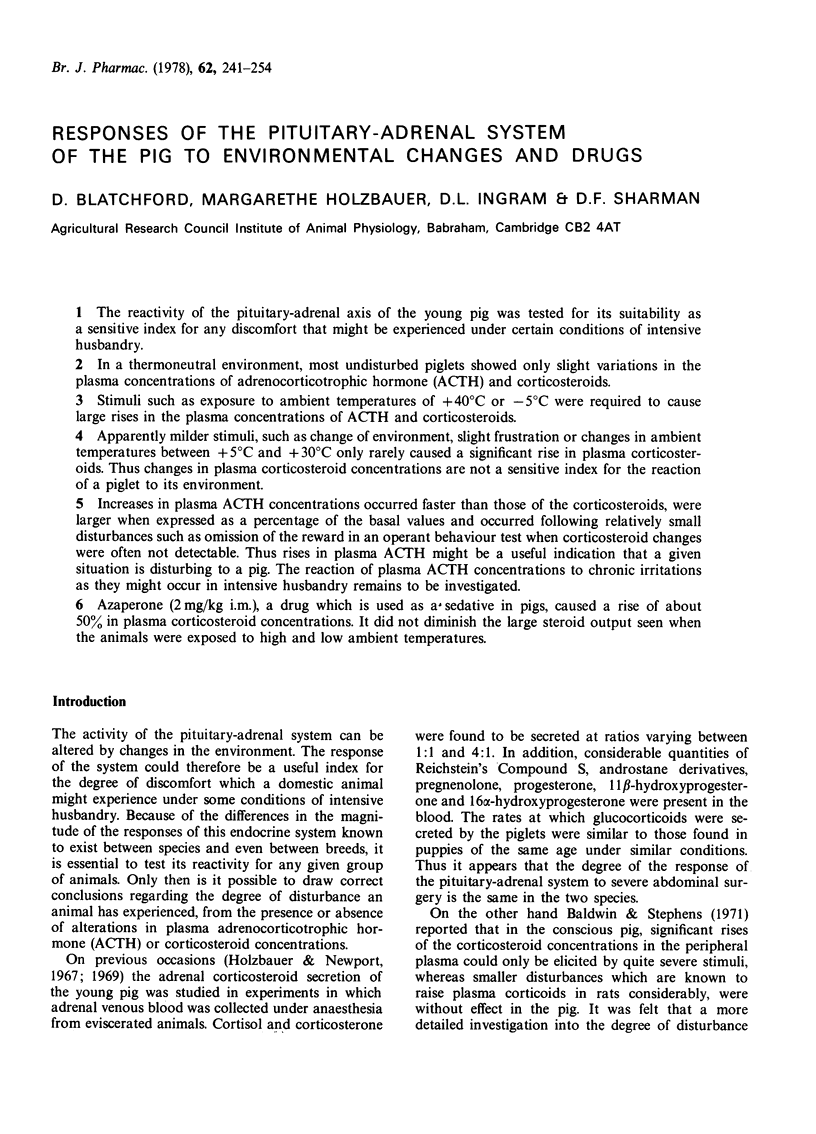

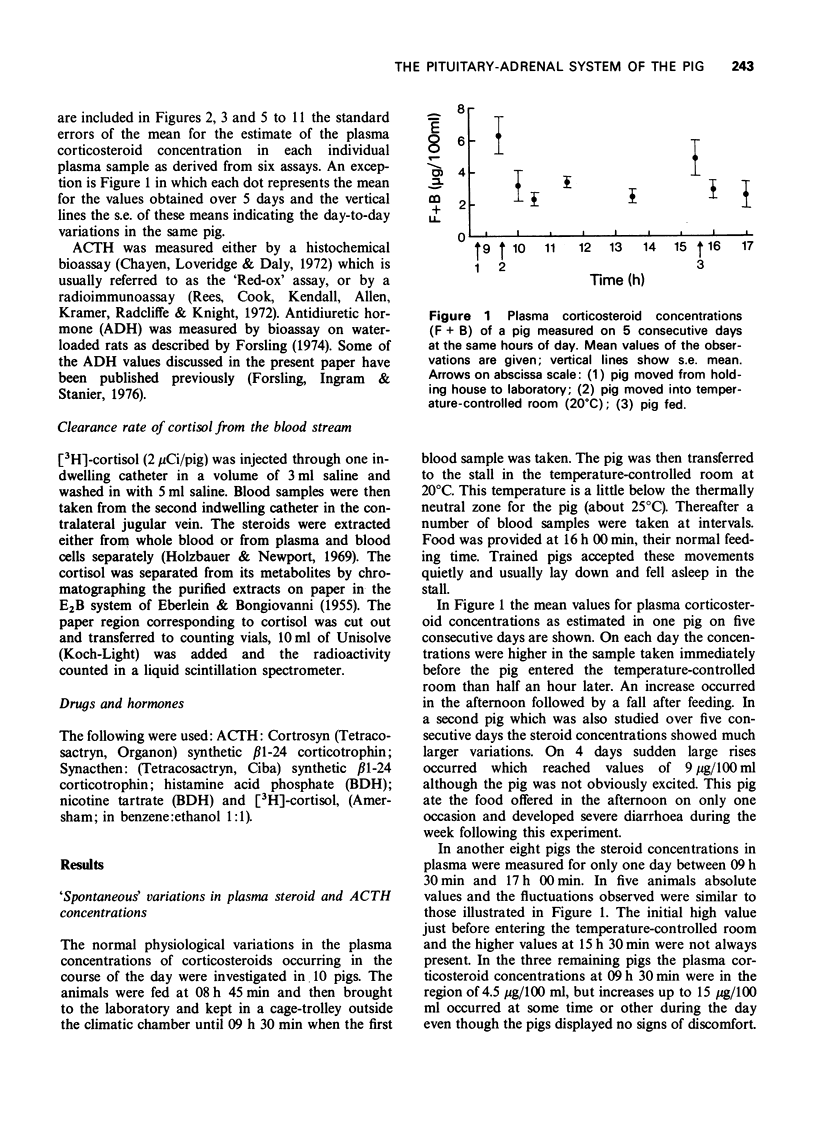
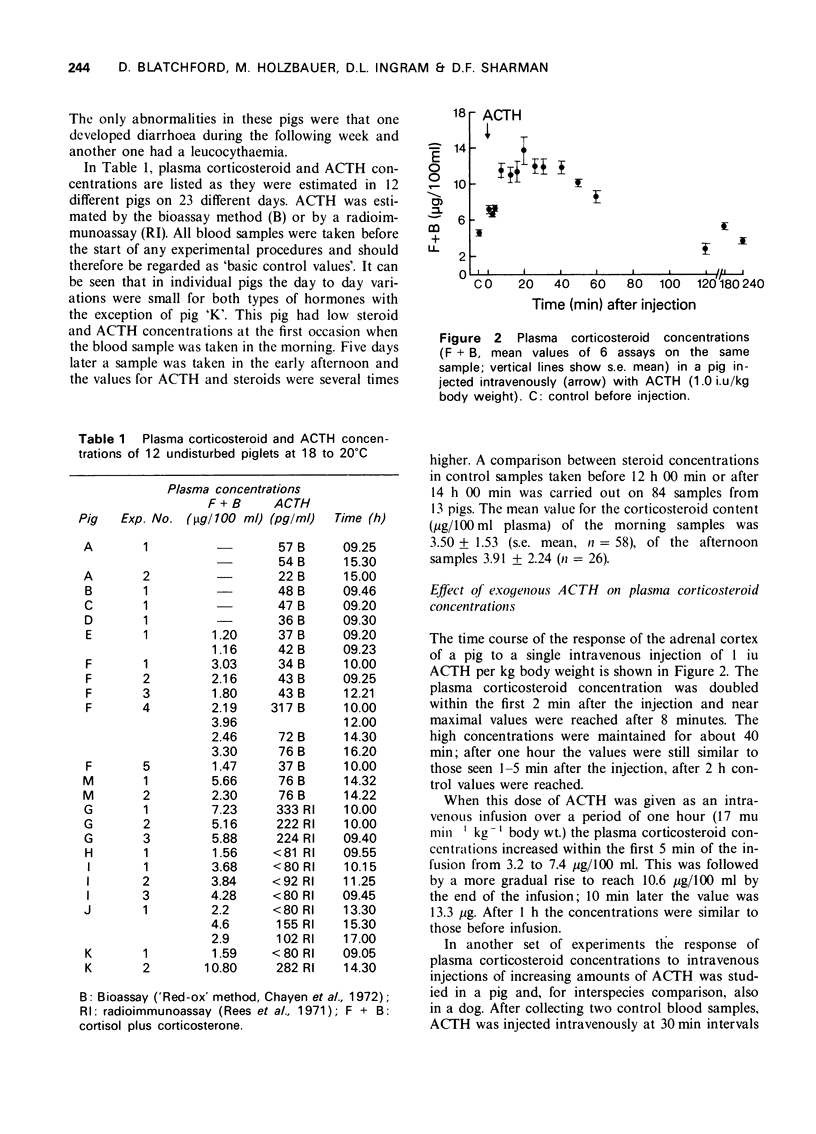
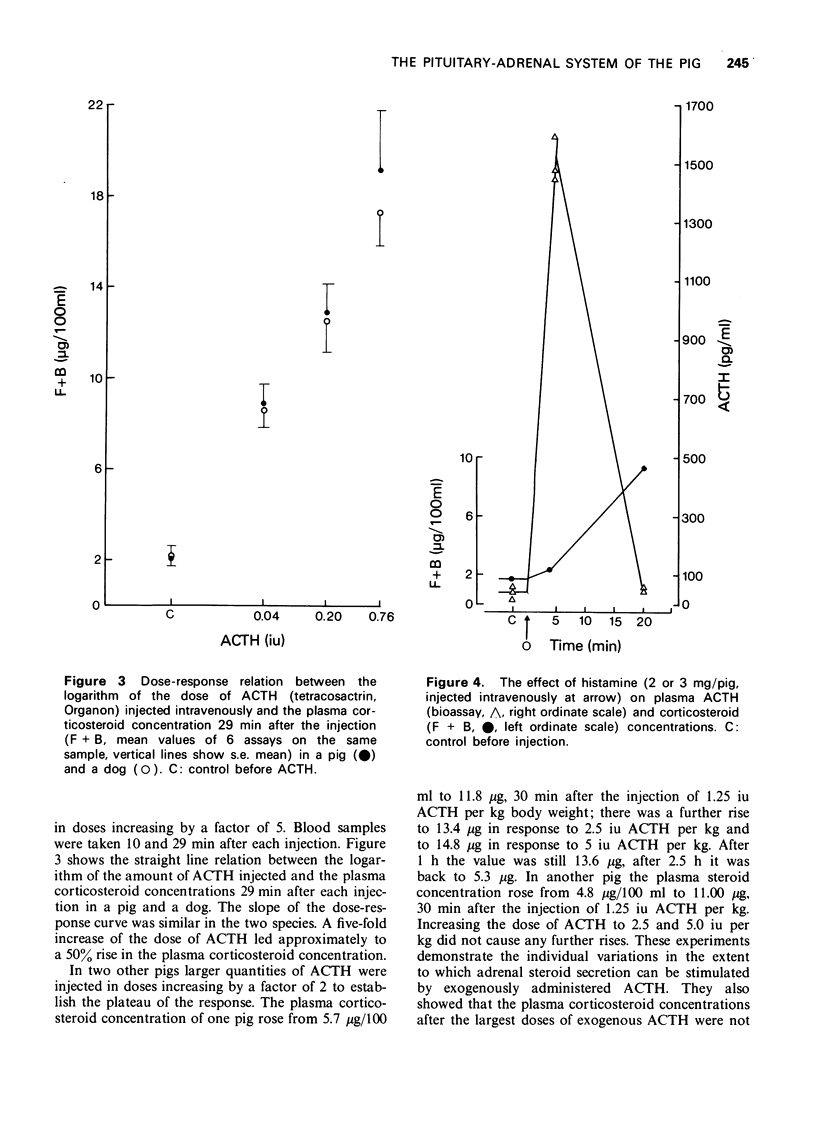
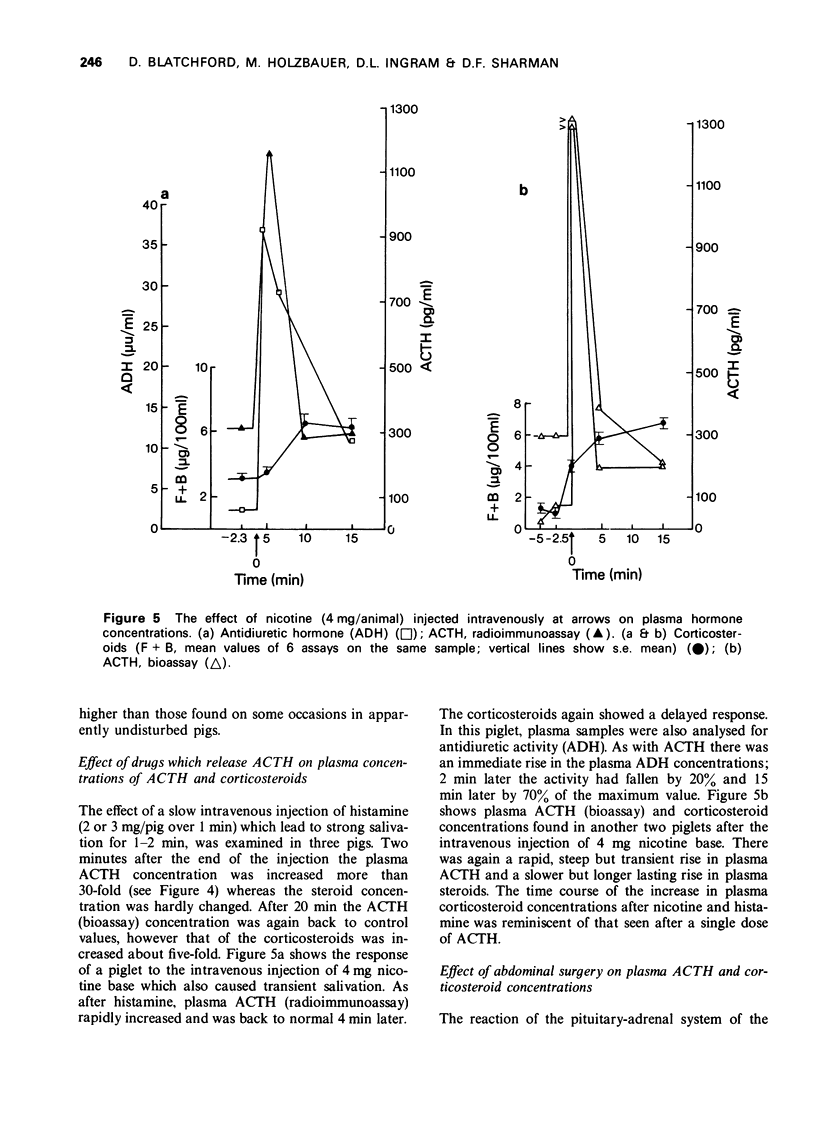
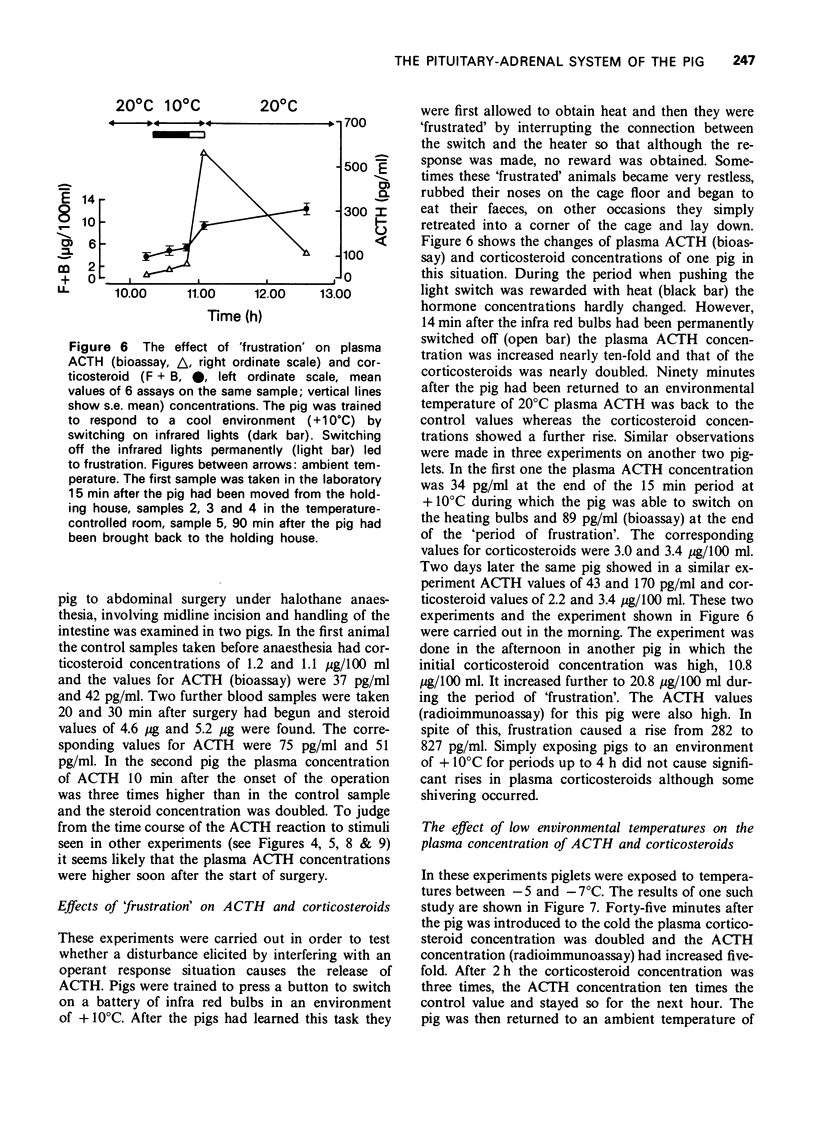
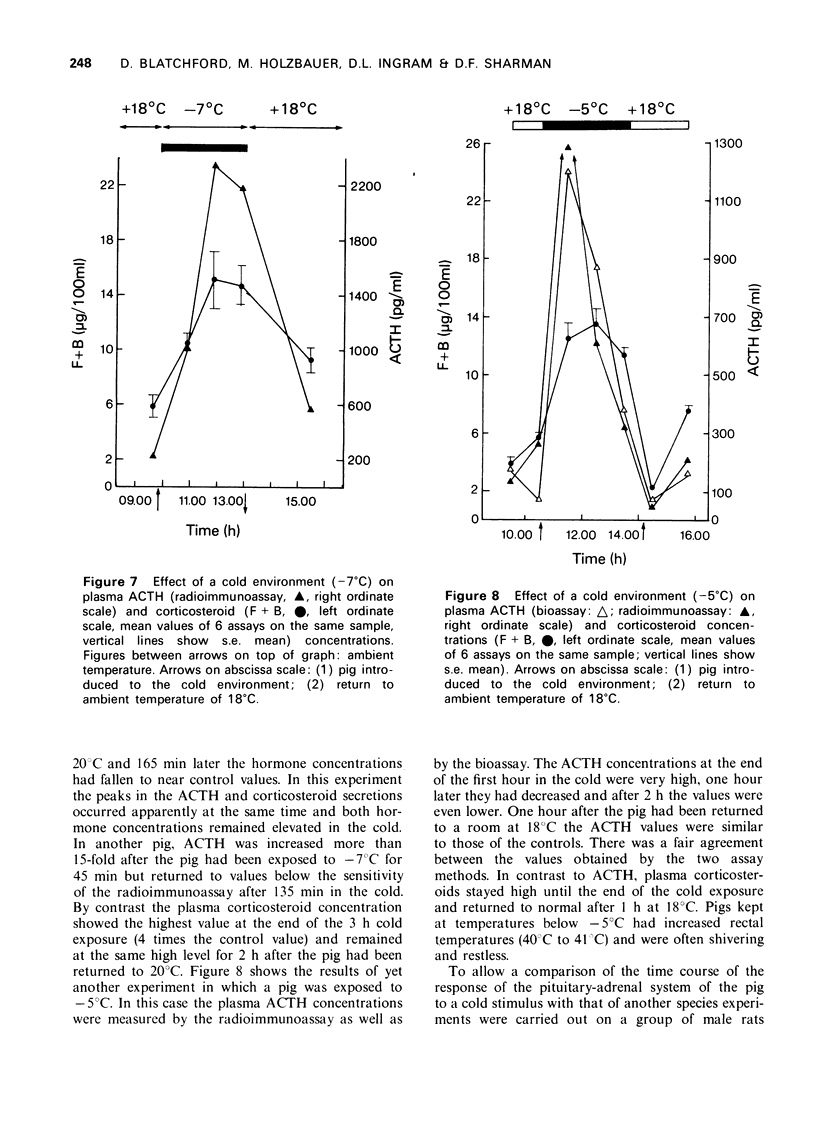
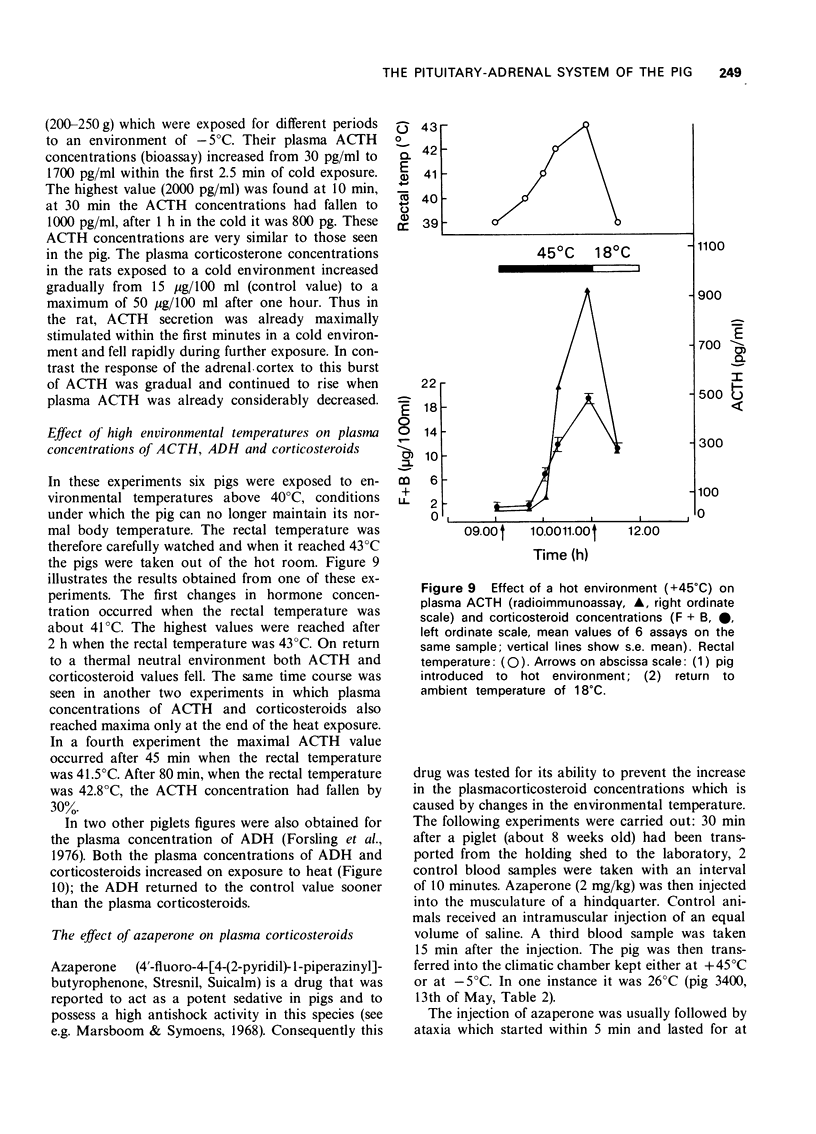
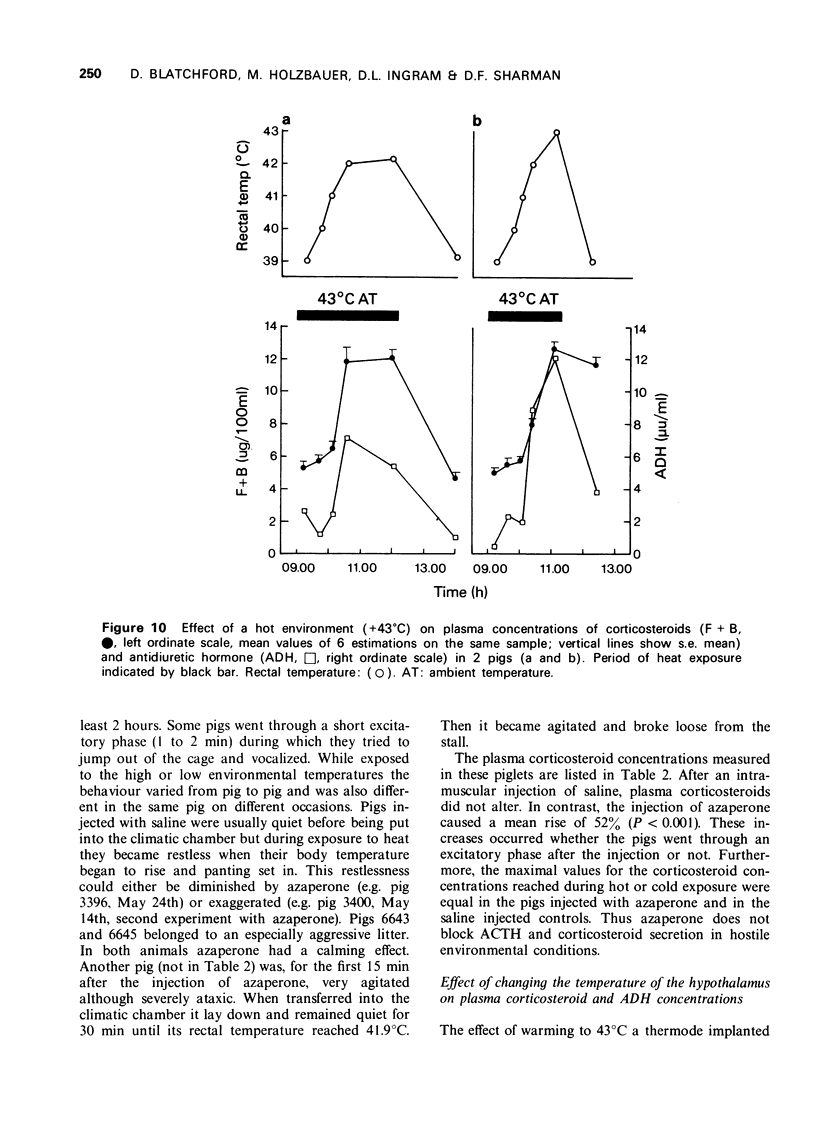
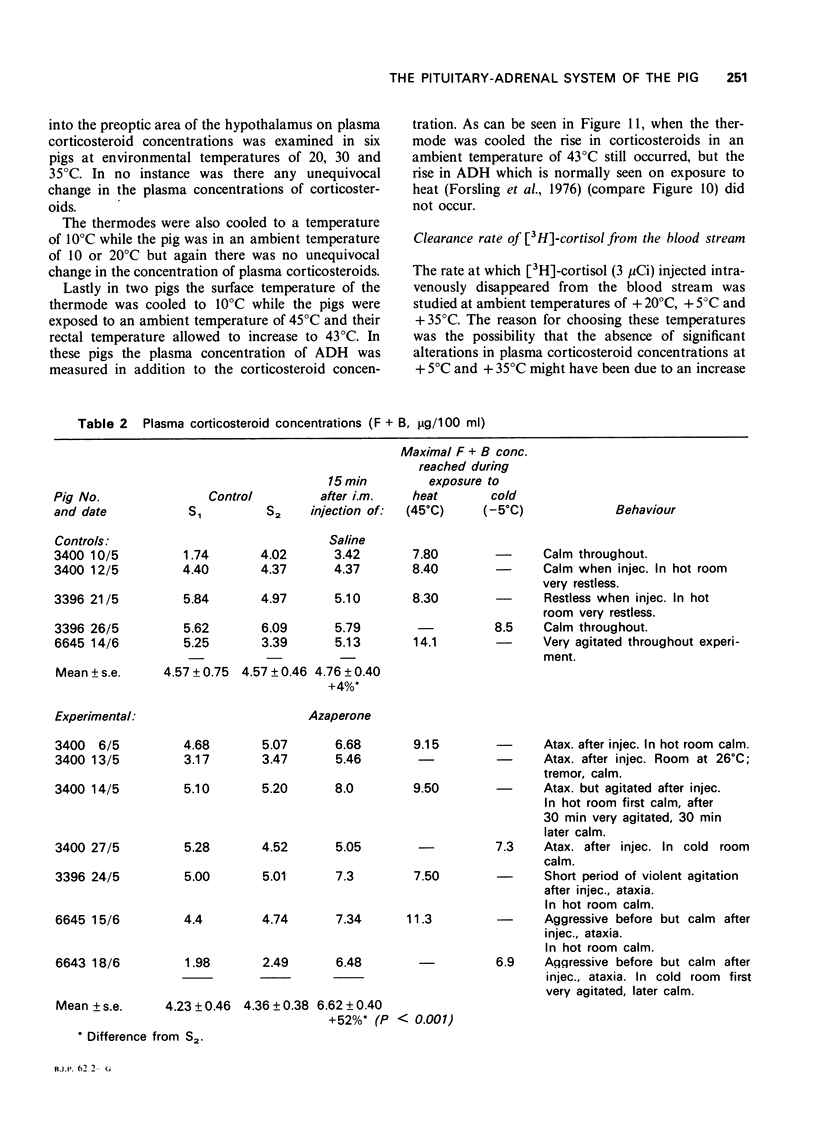
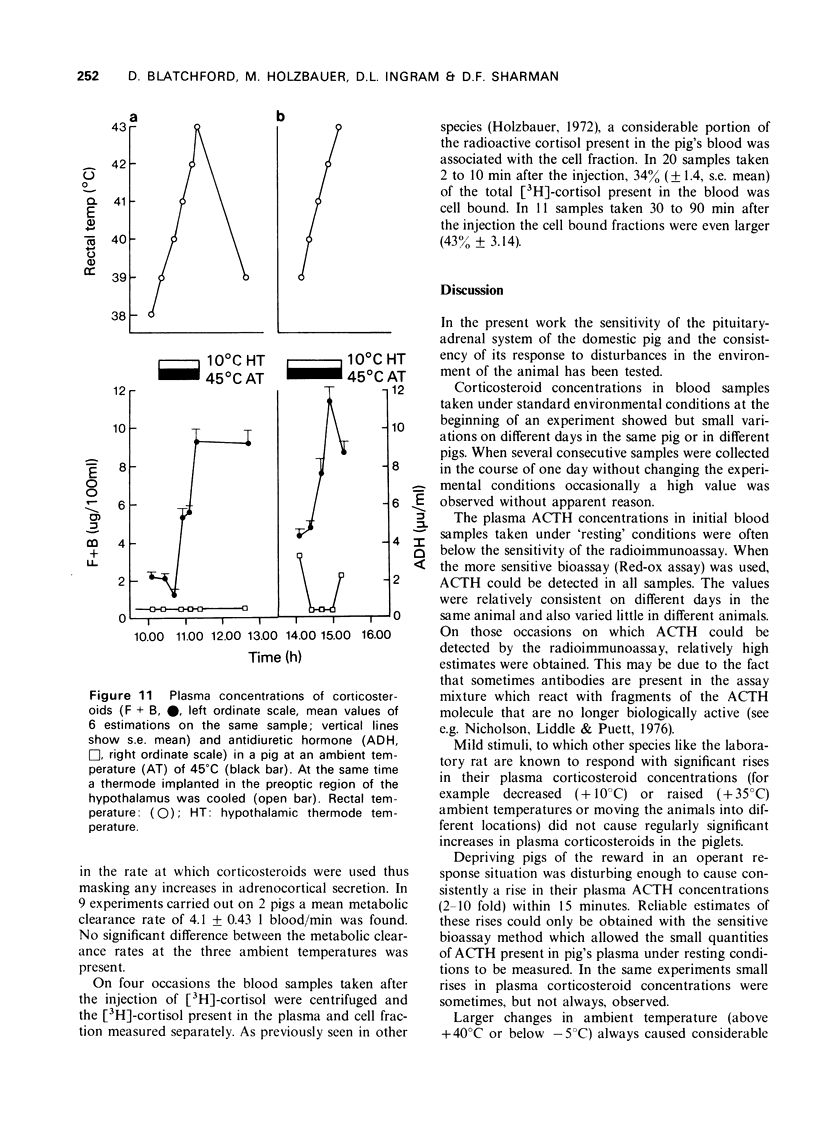
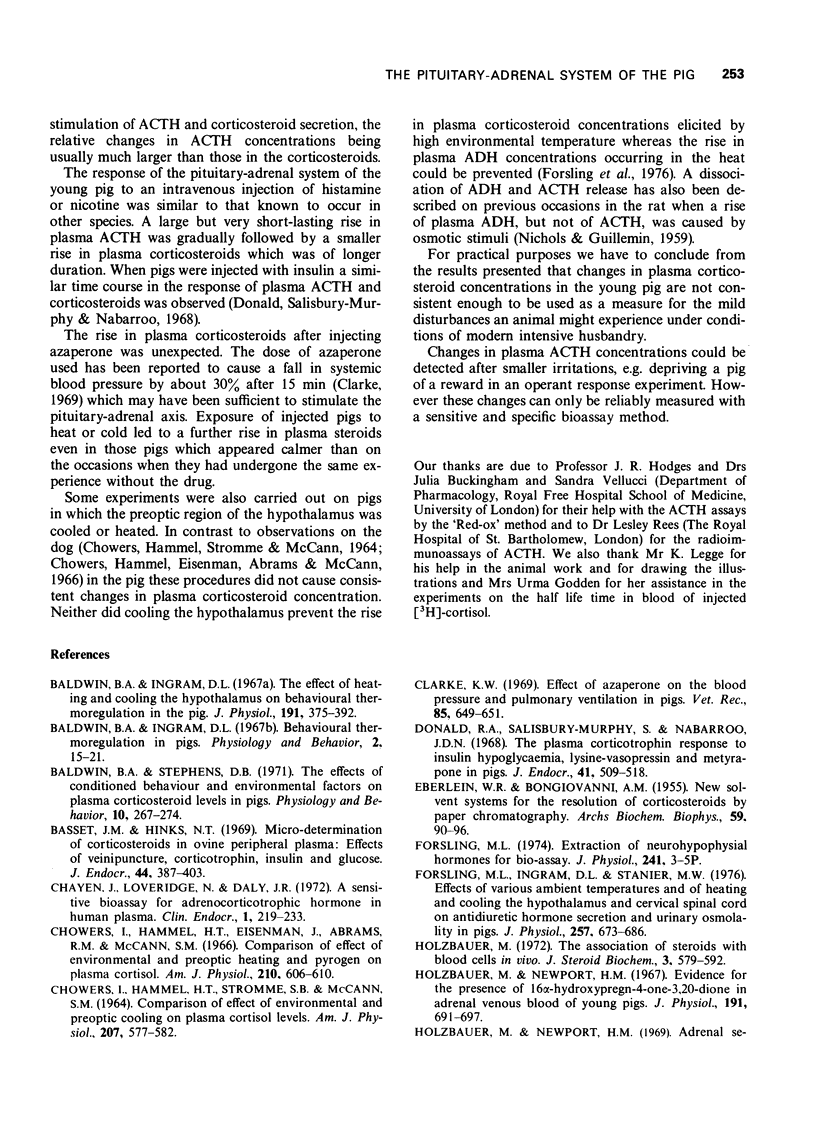
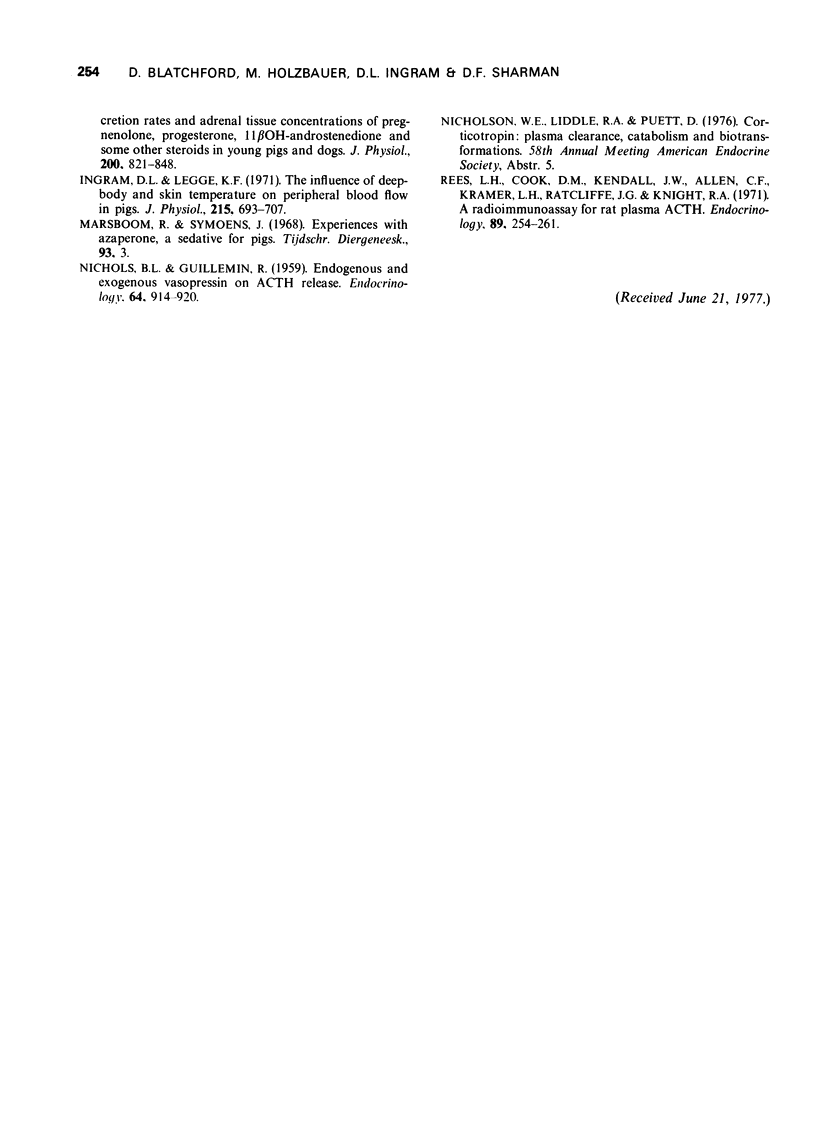
Selected References
These references are in PubMed. This may not be the complete list of references from this article.
- Baldwin B. A., Ingram D. L. Effect of heating & cooling the hypothalamus on behavioral thermoregulation in the pig. J Physiol. 1967 Jul;191(2):375–392. doi: 10.1113/jphysiol.1967.sp008256. [DOI] [PMC free article] [PubMed] [Google Scholar]
- Baldwin B. A., Stephens D. B. The effects of conditioned behaviour and environmental factors on plasma corticosteroid levels in pigs. Physiol Behav. 1973 Feb;10(2):267–274. doi: 10.1016/0031-9384(73)90309-0. [DOI] [PubMed] [Google Scholar]
- Bassett J. M., Hinks N. T. Micro-determination of corticosteroids in ovine peripheral plasma: effects of venipuncture, corticotrophin, insulin and glucose. J Endocrinol. 1969 Jul;44(3):387–403. doi: 10.1677/joe.0.0440387. [DOI] [PubMed] [Google Scholar]
- CHOWERS I., HAMMEL H. T., STROMME S. B., MCCANN S. M. COMPARISON OF EFFECT OF ENVIRONMENTAL AND PREOPTIC COOLING ON PLASMA CORTISOL LEVELS. Am J Physiol. 1964 Sep;207:577–582. doi: 10.1152/ajplegacy.1964.207.3.577. [DOI] [PubMed] [Google Scholar]
- Chayen J., Loveridge N., Daly J. R. A sensitive bioassay for adrenocorticotrophic hormone in human plasma. Clin Endocrinol (Oxf) 1972 Jul;1(3):219–233. doi: 10.1111/j.1365-2265.1972.tb00393.x. [DOI] [PubMed] [Google Scholar]
- Chowers I., Hammel H. T., Eisenman J., Abrams R. M., McCann S. M. Comparison of effect of environmental and preoptic heating and pyrogen on plasma cortisol. Am J Physiol. 1966 Mar;210(3):606–610. doi: 10.1152/ajplegacy.1966.210.3.606. [DOI] [PubMed] [Google Scholar]
- Clarke K. W. Effect of azaperone on the blood pressure and pulmonary ventilation in pigs. Vet Rec. 1969 Dec 6;85(23):649–651. [PubMed] [Google Scholar]
- Donald R. A., Murphy S. S., Nabarro J. D. The plasma corticotrophin response to insulin hypoglycaemia, lysine-vasopressin and metyrapone in pigs. J Endocrinol. 1968 Aug;41(4):509–518. doi: 10.1677/joe.0.0410509. [DOI] [PubMed] [Google Scholar]
- EBERLEIN W. R., BONGIOVANNI A. M. New solvent systems for the resolution of corticosteroids by paper chromatography. Arch Biochem Biophys. 1955 Nov;59(1):90–96. doi: 10.1016/0003-9861(55)90465-3. [DOI] [PubMed] [Google Scholar]
- Forsling M. L., Ingram D. L., Stanier M. W. Effects of various ambient temperatures and of heating and cooling the hypothalamus and cervical spinal cord on antidiuretic hormone secretion and urinary osmolality in pigs. J Physiol. 1976 Jun;257(3):673–686. doi: 10.1113/jphysiol.1976.sp011391. [DOI] [PMC free article] [PubMed] [Google Scholar]
- Holzbauer M., Newport H. M. Evidence for the presence of 16 alpha-hydroxypregn-4-ene-3,20-dione in adrenal venous blood of young pigs. J Physiol. 1967 Aug;191(3):691–697. doi: 10.1113/jphysiol.1967.sp008275. [DOI] [PMC free article] [PubMed] [Google Scholar]
- Holzbauer M. The association of steroids with blood cells in vivo. J Steroid Biochem. 1972 Apr;3(3):579–592. doi: 10.1016/0022-4731(72)90104-5. [DOI] [PubMed] [Google Scholar]
- Ingram D. L., Legge K. F. The influence of deep body temperatures and skin temperatures on peripheral blood flow in the pig. J Physiol. 1971 Jul;215(3):693–707. doi: 10.1113/jphysiol.1971.sp009492. [DOI] [PMC free article] [PubMed] [Google Scholar]
- NICHOLS B., Jr, GUILLEMIN R. Endogenous and exogenous vasopressin on ACTH release. Endocrinology. 1959 Jun;64(6):914–920. doi: 10.1210/endo-64-6-914. [DOI] [PubMed] [Google Scholar]
- Rees L. H., Cook D. M., Kendall J. W., Allen C. F., Kramer R. M., Ratcliffe J. G., Knight R. A. A radioimmunoassay for rat plasma ACTH. Endocrinology. 1971 Jul;89(1):254–261. doi: 10.1210/endo-89-1-254. [DOI] [PubMed] [Google Scholar]


